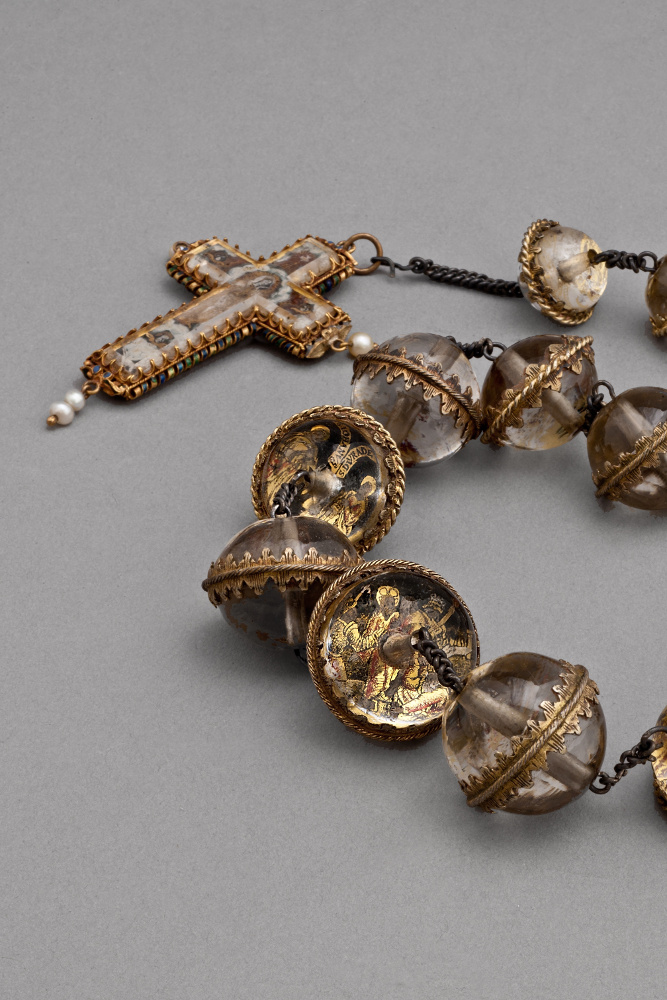
One of my favourite objects in the exhibition is this extraordinary rock-crystal rosary decorated with gold leaf. Almost certainly it belonged to a person of great wealth, as its size and materials would have been very expensive in Renaissance Italy.
During the Renaissance, devotees could own a great variety of devotional objects, from plain rosaries made of wooden beads strung together, to very elaborate and jewel-like examples, such as this one. When studying this rosary, I immediately wondered what kind of person would have owned it – a man or a woman – and whether its owner would have originally acquired it more for the glittering beauty of its decoration, which sparkles when lit by a candle or caught in the sunlight, or for its devotional function?
When examining the rosary, I was surprised by how heavy the beads are and how difficult they are to handle without the risk of breaking them (I could only do so with both hands). As the care needed to handle the rosary ‘forced’ me to carry it reverently, so it would have been for its original owner. While handling it, my eyes were tantalised by the golden miniatures contained within each bead, which called me for a closer and more intimate look. Twisting each of them between my fingers I was able to observe scenes of Christ’s Passion, as well as pairs of famous saints. I realised that the rosary’s beauty might have attracted the devotee’s gaze as it attracted mine, prompting closer observation of the glittering miniatures, and thus moving its original owner from profane aesthetic attraction to an intimately devotional moment.
Irene Galandra Cooper Phd candidate, Domestic Devotions Project




